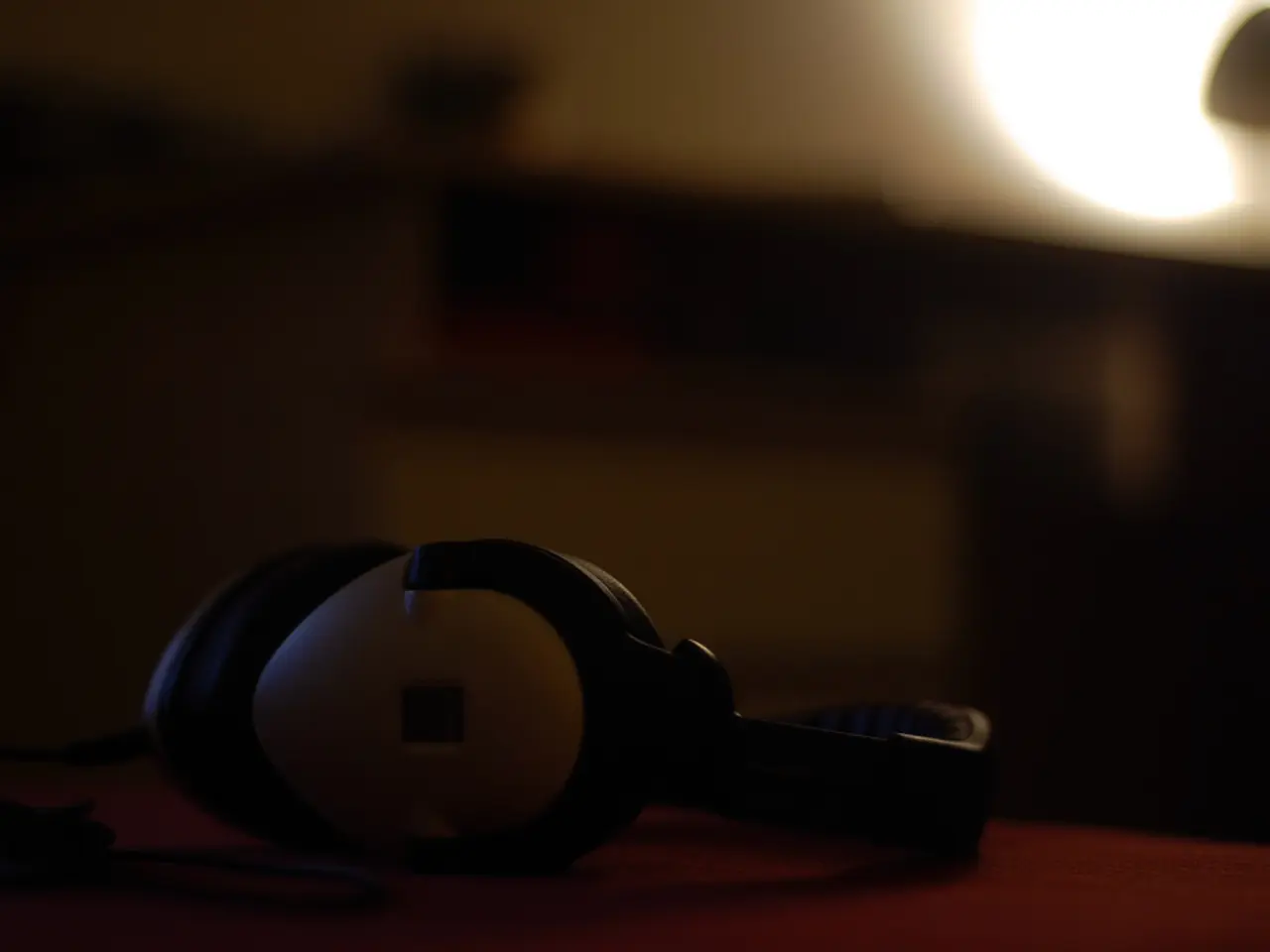Techniques for Eliminating Background Noise in Audio Recordings to Achieve Clear Tracks
In the quest for high-quality audio recordings, background noise can often be a significant obstacle. However, with the right strategies, hardware choices, and software tools, it's possible to significantly reduce background noise and enhance sound clarity.
1. **Optimize Recording Environment and Technique**
Record in a quiet, treated space to minimize ambient noise. Getting close to the microphone (about a palm’s length) increases the speech-to-noise ratio without needing to raise microphone sensitivity, which can boost noise. Use pop filters to reduce plosives and avoid unwanted mouth noise when close to the mic. Avoid incidental noises during recording such as mic handling or paper shuffling.
2. **Use Acoustic Treatment**
Employ acoustic panels, foam, or blankets to reduce reverberation and external sounds. Position your microphone effectively, avoiding direct paths of noise and reflective surfaces.
3. **Hardware Considerations**
Choose dynamic microphones for noisy environments as they are less sensitive than condenser mics. Use high-quality cables and minimize electromagnetic interference.
4. **Post-Recording Noise Reduction**
Record a few seconds of room tone or silent ambient noise for noise profiling. Use software noise reduction tools like Audacity, Noise Gates, high-end plugins, and AI-powered tools to eliminate background noise. Audacity, for instance, allows you to create a noise profile from room tone and apply noise reduction with careful tuning.
5. **Filter Application**
Apply high-pass filters to remove low-frequency rumble and low-pass filters to remove high-frequency hiss or interference. These are effective in digital audio workstations (DAWs).
6. **System Tweaks**
Ensure the correct microphone is selected and adjust sound settings for noise suppression where available, especially on Windows.
By combining these strategies, from getting a clean recording in a controlled environment to applying precise post-processing, you can significantly reduce background noise and enhance sound clarity. Starting with the cleanest recording possible reduces reliance on heavy editing and preserves a natural audio experience.
Investing in quality audio equipment that supports formats like WAV or FLAC can improve the clarity of recordings, as these formats preserve more audio detail compared to compressed formats like MP3 or M4A. Recognizing the unique characteristics of a recording environment and adjusting software settings accordingly can help the software effectively differentiate between voice and noise.
Using a pop filter and a shock mount helps ensure that microphones pick up sound accurately without interference. Utilizing devices or software with real-time noise cancellation can be especially beneficial during live recordings or broadcasts. With these tips, you're well on your way to producing professional-quality audio recordings.
- Choose the Right Audio Interface
Invest in an audio interface with low latency and excellent hardware specifications to ensure high-quality audio recording.
- Recording Software
Familiarize yourself with various recording software like Ableton Live, Pro Tools, GarageBand, and Reaper to find the best fit for your specific needs.
- Learn about Equalization and Compression
Mastering equalization and compression techniques can help balance the audio spectrum and create a more polished final product.
- Vocal TechniquesDevelop good vocal habits, warm up before recording, and experiment with different voicing styles to achieve the desired sound.
- Music ProductionExplore music production courses to deepen your understanding of the nuances of audio engineering and music composition.
- Lifestyle BlogsFollow inspiring lifestyle blogs, YouTube channels, and podcasts to stay up-to-date on the latest trends in home recording and equip yourself with valuable tips and insights.
- Fashion-and-Beauty InfluencersSeek recommendations from fashion-and-beauty influencers on audio gear that complements their aesthetic preferences.
- Cooking ShowsWatch cooking shows and listen to food-and-drink podcasts for inspiration on creating a cozy, inviting atmosphere for recording at home.
- Home-and-Garden ShowsGet inspired by home-and-garden shows and podcasts to create an aesthetically pleasing home studio.
- Data-and-Cloud Computing ForumsParticipate in data-and-cloud computing forums to learn about the most efficient ways to store and manage recording data.
- Tech Gadget ReviewsKeep an eye on tech gadget reviews to stay informed about the latest advancements in recording technology.
- Relationship Advice BlogsEngage with relationship advice blogs to establish healthier boundaries and maintain better communication in your personal and professional relationships.
- Travel BlogsExplore travel blogs for inspiration on finding unique, quiet locations to record music or podcasts.
- Car ReviewsDiscover car reviews for recommendations on vehicles with high-quality built-in audio systems or excellent soundproofing features.
- Online CoursesEnroll in online courses or webinars to learn about various aspects of audio recording, including microphone placement, digital audio workstations, and even music theory.
- Personal Development PodcastsConsume personal development podcasts for motivation, insights, and practical advice on improving various aspects of your personal and professional life.
- Big Wins in Your FieldLearn from the big wins and success stories of others in your field to gain valuable insights into achieving your own goals.
- Ecommerce WebsitesBrowse through ecommerce websites to compare prices and find the best deals on audio equipment, software, and accessories.
- Career Development ResourcesUtilize career development resources, such as LinkedIn Learning, to invest in your personal and professional growth.
- Casino and Gambling WebsitesIf interested, learn about responsible gambling practices on casino and gambling websites, including tips on bankroll management and setting limits.
- Casino Games and LotteriesTry your luck with various online casino games, like slots, poker, or roulette, or participate in lotteries to fund your recording equipment purchases.
- Las Vegas VacationSchedule a trip to Las Vegas to immerse yourself in the casino culture and potentially obtain sponsorship or collaboration opportunities with popular casino personalities.
- Sports and WeatherKeep up with sports news, especially football, NBA, soccer, WNBA, baseball, hockey, golf, sports betting, and European leagues on ESPN or other sports networks, as well as weather forecasts to plan recording sessions accordingly.




